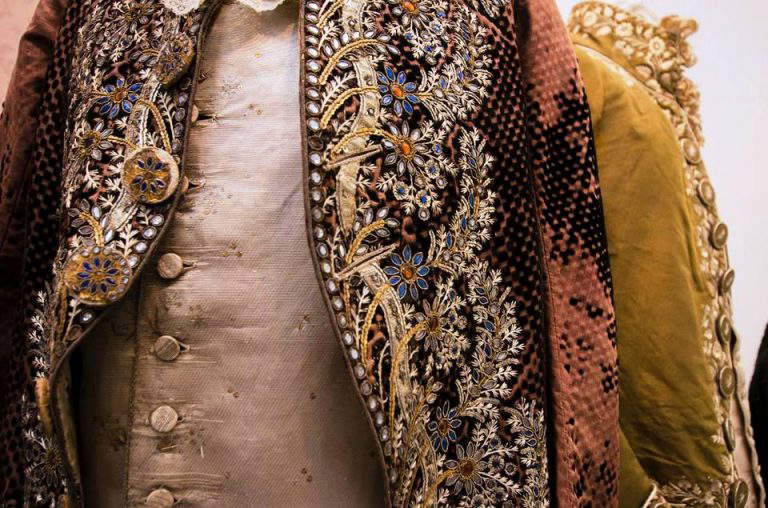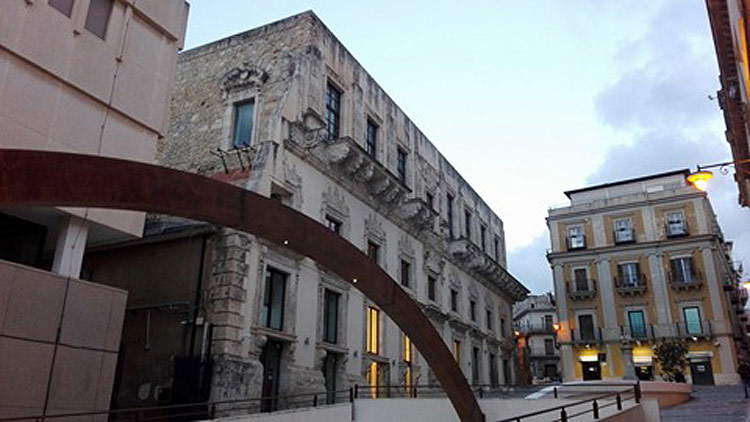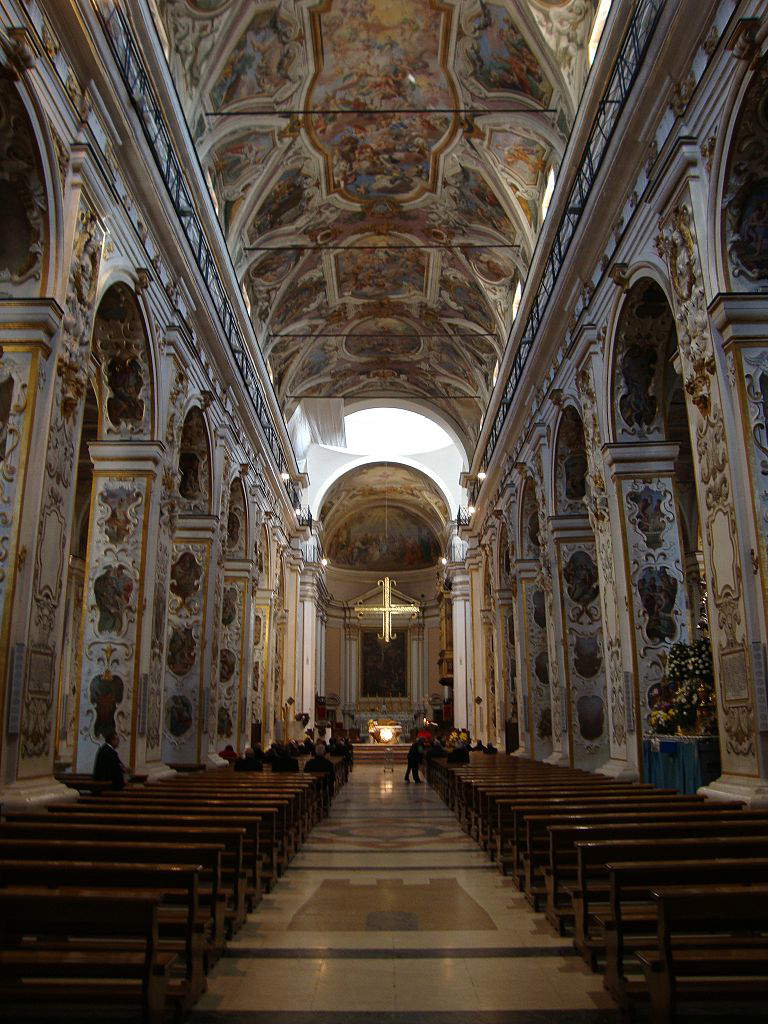Dresses from the 18th to the 20th century among the beauties of Caltanissetta
Caltanissetta, nestled in the heart of Sicily’s hilly and rural landscape, is recognizable arriving from anywhere on the island thanks to the now decommissioned 286-meter-high RAI antenna.It is often viewed from afar as one travels along the main Sicilian arteries, but the city is certainly worth a visit.
These days the opportunity to discover it is the exhibitionMagnificence and Wefts of Art. Clothes from the ancient textile manufactures of the 18th-20th centuriesvisitable from January 26 to April 22, 2018 in the main floor of Palazzo Moncada. It is a selection of ancient dresses and costumes belonging to the prestigious collection of Prof. Raffaello Piraino of Palermo, consisting of more than five thousand items mostly from ancient Sicilian families and belonging to different eras (1700-1970). On display are numerous dresses, especially women’s, that belonged to the Palermo aristocracy, with precious examples from the Napoleonic era, romantic dresses, and costumes from the Belle Époque and the 20th century. Among the most curious pieces are a mismatched shoe from the second half of the 17th century, a tailcoat that belonged to a member of the Moncada family, Franca Florio’s gloves and the exhibition’s iconic red dress that belonged to Barons Polizzello of Petralia from 1865. The exhibition, curated by architect Filippo Ciancimino and organized by the Cultural and Environmental Museum Network of Central Sicily under the patronage of the Municipality of Caltanissetta, allows visitors to embark on an engaging journey through the history of Sicilian costume in its most refined and elegant expressions.
 |
| A dress at the exhibition Magnificence and Wefts of Art. |
 |
| Palazzo Moncada in Caltanissetta. Ph. Credit Luigi Garbato |
Having finished visiting the exhibition, one cannot help but be intrigued by the artistic beauty of the city and its rich history since prehistoric times.
The first inhabited settlements date back to the Sicans, documented in archaeological sites in the area, who later came into contact with the Greek settlers who came up the Himera/Salso River from the coast of Gela. Valuable evidence of this cultural contamination is now on display in the Regional Archaeological Museum, and among them the clay model of an archaic temple stands out for its value and beauty. The archaeological museum is located a few steps from the Abbey of Santo Spirito, built in Norman times: the building is striking for its simplicity and beauty, but also for the treasures of art it contains, such as a wooden crucifix from the 15th century, some frescoes from the 16th century and a small urn from the Flavian period reused as liturgical furniture. The Normans came to the city in the 11th century by recapturing the Castle of Pietrarossa, which was an Arab stronghold. The Arabs in fact founded a residential settlement in the present-day Angeli quarter, which still retains the urban layout and toponymy of the time. At the far end of the neighborhood stand the ruins of the Castle of Pietrarossa, destroyed at the end of the 16th century, to which we owe the town’s Arabic name:Qalat an-nisa meaningCastle of Women. At the foot of the castle was built in Swabian times the church of Santa Maria degli Angeli, which has been remodeled several times and recently restored. In the 17th century the Convent of the Reformed Friars Minor was attached to the church at the behest of the Moncada family, which ruled the city from 1407 to 1812. To them we owe the creation of the new Renaissance nucleus, located on the edge of the medieval one, characterized today by the intersection of Corso Umberto I and Corso Vittorio Emanuele II, and ledification of numerous churches in the historic center: from the Cathedral of Santa Maria la Nova, frescoed by Flemish painter Guglielmo Borremans, to the church of San Domenico, with its splendid altarpiece by Mannerist painter Filippo Paladini; the church of SantAgata al Collegio, with altars decorated with eighteenth-century mixed marbles, the church of Santa Croce, with its snow-white stuccoes, and many others are also worth a visit.
 |
| The interior of the Cathedral of Caltanissetta. Ph. Credit |
Valuable works of art are housed in the Diocesan Museum of the Episcopal Seminary G. Speciale, while an authentic masterpiece of the Moncadian period is the completed Palazzo Moncada, an astonishing building with its zoomorphic and anthropomorphic corbels. Inside is the Galleria Civica d’Arte, which preserves sculptures by late 19th-century artists, particularly the Nisseni Michele Tripisciano and Giuseppe Frattallone. Both sculptors were encouraged by the local nobility, respectively the Lanzirotti and Barile families, who, thanks to the fall of the Moncadas and especially the exploitation of the sulfur deposits, were able to establish their wealth. In the same period, the city’s wealthiest families built suburban villas and renovated their palaces, all overlooking the two main courses, equipping them with neoclassical, eclectic and neo-Gothic facades; the same pageantry can be seen in the aristocratic chapels of the Angeli cemetery. From the same period is the façade of the church of San Sebastiano, designed by Pasquale Saetta and decorated with sculptures by Francesco Biangardi; the same Neapolitan sculptor and his son Vincenzo were commissioned at the end of the 19th century to create the sacred groups of the Vare that parade through the streets of the historic center on Holy Thursday evening. These were wanted as a sign of devotion by the miners who survived the accident in the Gessolungo mine in 1881. The miners made a life of sacrifice, recounted in the literature of those years and in the testimonies preserved in the Mineralogical Museum, where one can also admire precious minerals and sulfur crystals.
So much more could be said about Caltanissetta: about the tastiest bread in Sicily produced in the rural village of Santa Rita or about the exquisite locally produced hard nougat; about the monument to the Redeemer and the Triton fountain; about the rollò, a traditional ricotta cheese dessert, and the theater season curated again this year by Moni Ovadia; or about the spectacular Holy Week, which from Palm Sunday to Easter Sunday offers different emotions and suggestions for every moment. The best thing, however, is to decide to discover in person this hidden heart of Sicily.
Warning: the translation into English of the original Italian article was created using automatic tools. We undertake to review all articles, but we do not guarantee the total absence of inaccuracies in the translation due to the program. You can find the original by clicking on the ITA button. If you find any mistake,please contact us.



























